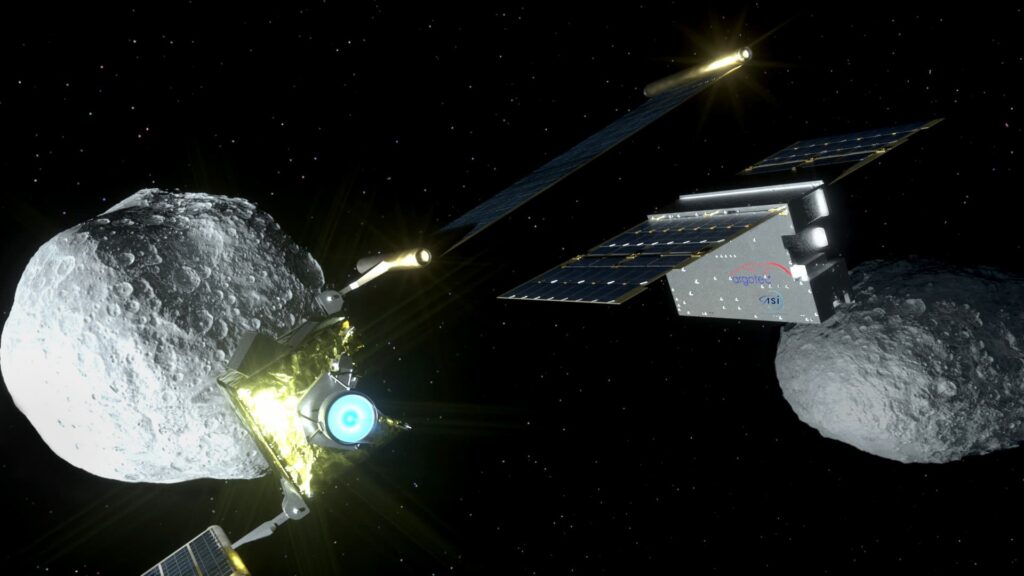Along night time, September 26-27 the NASA DART (Double Asteroid Redirection Test) spacecraft intentionally impacted, at almost 25000 km/h, the asteroid Dimorphos, the smaller body in the Didymos. binary asteroid system.DART represents the first attempt to experimentally verify the humanity capability to deflect potentially Earth-threatening asteroid by driving a space probe to crash into the celestial body at maximum relative speed to shift the natural body orbit.
A crucial role in the mission is played by LICIACube (Light Italian Cubesat for Imaging of Asteroids), the small spacecraft entirely Italian-made, which will go down in history as the first European CubeSat to fly in deep space, far from our protected terrestrial environment.

LICIACube, infatti, dopo essersi staccato lo scorso 12 settembre dalla sonda madre DART, è transitato a poche decine di chilometri di distanza dall’asteroide colpito a una velocità di 6-7 km/s, affrontando la nuvola di frammenti per poterne acquisire immagini e riprendere, con le sue camere di bordo, il cratere formatosi, al meglio della risoluzione possibile, consentendo di raccogliere dati fondamentali per lo studio del piccolo corpo celeste e unico testimone della dinamica dell’urto con Dimorphos.
The ASTRA research group researchers, led by professor Michèle Lavagna, Giovanni Zanotti, Michele Ceresoli and Andrea Capannolo from the Department of Aerospace Science and Technology gave a key contribution to this futuristic mission success. During the past months, they hard worked in defining the LICIACube trajectory from the deployment until the asteroid flyby, while during the last weeks, after LICIA release from DART, they redesigned the crucial orbital manoeuvres to correct the CubeSat trajectory, exploiting the data sent on Earth by the small probe. Throughout the whole project, they worked in synergy with the Italian Space Agency, University of Bologna, Argotec S.r.l. and the Jet Propulsion Laboratory personell.
The maneouvers they constantly worked on and performed by the small on-board engine, where aimed to avoid the debris generated by the impact while optimally pointing the on-board cameras to take the highest number of useful images, which will be later downloaded to Earth, to let the National Institute of Astrophysics scientists, coordinated by Dr Elisabetta Dotto, leader of the mission, work on their postprocessing.
LICIA represents a technological pathfinder and a primacy in the CubeSat arena, as it paves the way for such class of satellites to gaina role even on highly challenging space missions; moreover, LICIA witnesses a successful and profitable collaboration between Academy, Research Center and small enterprise, under the coordination of the Italian Space Agency, confirming the excellence of the technical-scientific competences of our Country and the professionality of our young researchers in an extremely high-profile international arena,
says Michèle Lavagna.
Read: https://www.polimi.it/apertura/dettaglio-apertura/home/liciacube-testimonia-limpatto-di-nasadart-con-un-asteroid
Credits cover image: ASI/Argotec